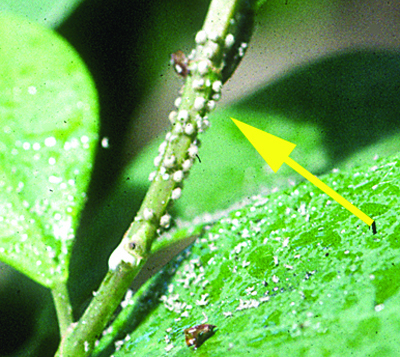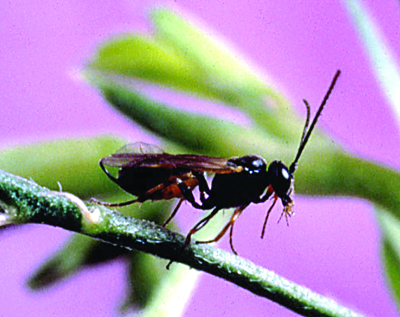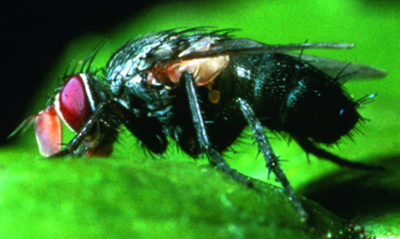Parasitoids
July 30, 2015
Parasitic wasps
There are over 40 families of parasitic wasps. A few commonly seen in the landscape are listed in this guide.

The oystershell scales with emergence holes in them have been parasitized by wasps. These tiny wasps (1 to 2 mm long) do not sting people. Several wasp families are known to parasitize scale insects.
Aphidiid wasps
These small (~3mm long or less) wasps are parasites of aphids. Female wasps lay only one egg inside each aphid. The wasp larva feeds and pupates inside the aphid, causing the aphid’s body to become hardened and mummified. The adult emerges from the aphid body by cutting a hole through the aphid’s hardened cuticle. Aphids parasitized by these wasps develop into swollen, tan or white mummies (at arrow).

Braconid wasps
This large family of wasps contains many important parasites of pest insects. Different wasp species attack particular insect stages. Eggs are laid inside the host. The larvae of some species develop inside the host, and some develop externally, creating small oval, white cocoons on the outside of the host’s body.

Adult wasps are < 10 mm long, black, orange or yellow in color. This braconid wasp is parasitizing codling moth eggs.
The ichneumon wasp below is representative of another important family of parasitoid wasps. Size varies from ~ 3 mm to 38 mm. The ovipositor may be quite long, sometimes longer than the body. They have long antennae. Adults are usually black, brown, or tan, but some are more brightly colored. Common types of hosts include caterpillars, beetle larvae and the larvae of sawflies.

Parasitic flies
There are at least 12 families of flies that contain parasitoids.
Tachinid flies are the largest and most important group of insect parasitic flies. The larvae of all species are parasitic. Many are important natural enemies of major pests. Caterpillars, sawfly larvae and beetle larvae and adults are the usual hosts. Tachinid flies resemble house flies, but with bristles at the tips of their abdomens. They are usually gray, black, or striped. Eggs may be laid in or on the body of the host. Often caterpillars can be found with conspicuous white eggs glued to their bodies. Even if eggs are laid outside, the larvae develop internally in the host.

Print a PDF of this page: Natural Enemies – parasitoids



 Print
Print Email
Email



